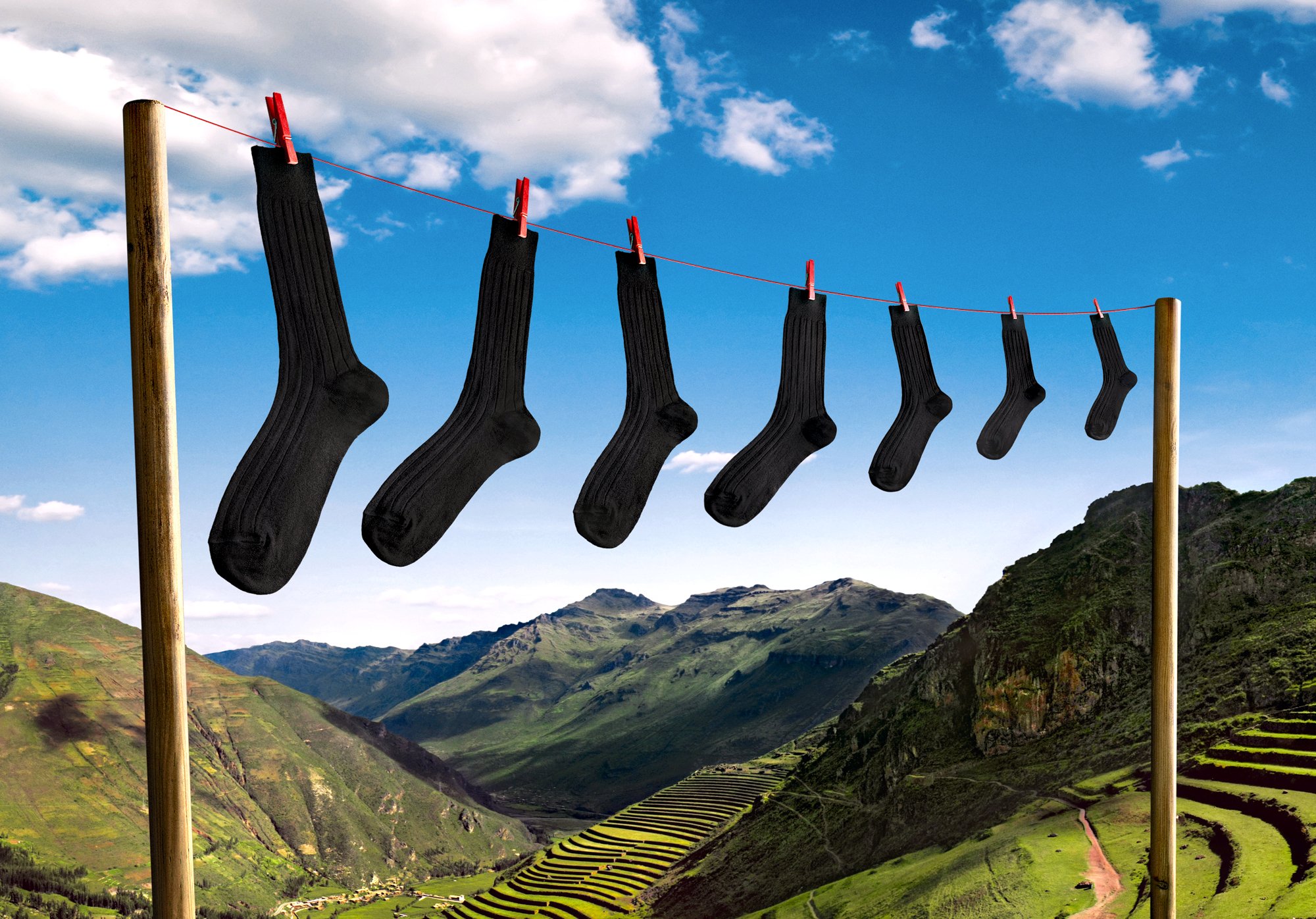A pair of unmatching black socks is seemingly insignificant. But it was the beginning of an impeccable business model for Samy Liechti.
The Black Socks story begins in the 1990s when Liechti was working as a junior consultant at an advertising agency. He was fresh out of uni and unfamiliar to business etiquette. One evening, he was unexpectedly invited to dinner with a group of Japanese executives. In realising the importance of the meeting, Liechti decided to change outfits – pulling two black socks from the mound in his drawer, assuming they were matching.
After dinner, the whole delegation was invited to a traditional Japanese tea ceremony. At the Japanese teahouse, custom demanded that shoes come off and what followed was the beginning of Black Socks.
To his embarrassment, Liechti’s black socks didn’t match, and on top of that, there was a hole at the right big toe. At the time, he wanted to bury his head into the dirt of the bonsai pot and disappear.
But this got him thinking. He calculated the time men spend thinking about, sorting and hunting for matching black socks; and realised he could give the average executive 20 days of time back and made this promise a pillar in his marketing campaigns.
Fourteen years later, having sold millions of socks worldwide, Liechti still has a thriving sockscription service. They still ship their core product, identical black socks, to restock men’s sock drawers around the world with a perpetual subscription-based business model. But now the company also sells socks in multiple colours, fabrics and patterns, and has added men’s underwear and shirts into the mix.
Due to its effectiveness and longevity, Liechti’s business has been the focus of several academic studies; and Liechti has travelled around the world to speak about his entrepreneurial journey at various conventions.

Samy Liechti, Co-Founder of Black Socks
There are seven aspects of Liechti’s business model that make it so successful:
Providing a need
Black socks ranks high in men’s list of needs – at least, in the First World. Though they’re not glamorous, Black Socks inventory never goes out of fashion. The company has positioned themselves as providing a necessity.
Adding value
The truth is, Black Socks isn’t actually trying to sell socks. Their real products are convenience and time. Cheap socks can be bought at K-Mart or Big W, but Black Socks sells the convenience of forgetting about socks, and the time to do things other than finding matching socks in a mountainous pile. Black Socks isn’t about the physical items they sell, but about the advantages that come with those items.
Targeting a niche market
A sockscription won’t necessarily appeal to women or blue-collar workers. Instead, Black Socks targets businessmen with expendable income, seeking to simplify their lives. Though everybody wears socks, Black Socks has a clearly defined niche to focus on. Trying to reach everyone, even if they fit into the ‘potential customer’ market, will likely result in reaching no one.
A subscription-based model: Sockscription
Subscriptions are probably one of the most lucrative of all business models. While Black Socks does need to engage in marketing operations to attract new customers; once they do that, they have a core customer base that automatically buys three times a year and renews year after year.
Essentially, cancelling the sockscription means no more matching socks to replace the ones that wear out, going back to shopping for socks and having to sort through socks all over again. The disadvantages outweigh the advantages of discontinuing the subscription, and so the business model encourages repeat purchases with little effort.
Ease of product line expansion
If customers trust Black Socks to deliver socks to them, it wouldn’t be outlandish to assume they might also want the ease of having underwear and t-shirts delivered as well. Liechti and his team have thought carefully about how they can expand their product line in a subtle fashion.
Profit over volume of sales
It is unlikely that Blacks Socks have sold more socks than a Bangladeshi factory shipping millions of pairs of socks to price-driven retailers around the world. But it wouldn’t be to far-off to assume that they are significantly more profitable. Volume sales are great, but without a profitable plan, it’s not sustainable.
Outsourcing business operations
Black Socks’ business operations are almost entirely outsourceable. Their products are manufactured in Northern Italy. Filling out orders, packaging and mailing are all easy to outsource. An offshore call centre can take orders and deal with customer questions – which most telecommunications companies do. And outsourcing accounting, marketing, and web design is also very common among businesses of all sizes today.
Though it’s uncertain how the business operates internally, Black Socks does have an outsourceable business model – meaning that whole system can be run from anywhere in the world the founders choose to live, and without needing too many staff members to supervise outsourced operations.
As a business, Black Socks is pretty flawless. And it started with a sock that had a hole in it.
Has anyone thought of creating Black Stockings? Stockings rip faster than socks.
More information on Black Socks is available via www.blacksocks.com.




















Trending
Daily startup news and insights, delivered to your inbox.